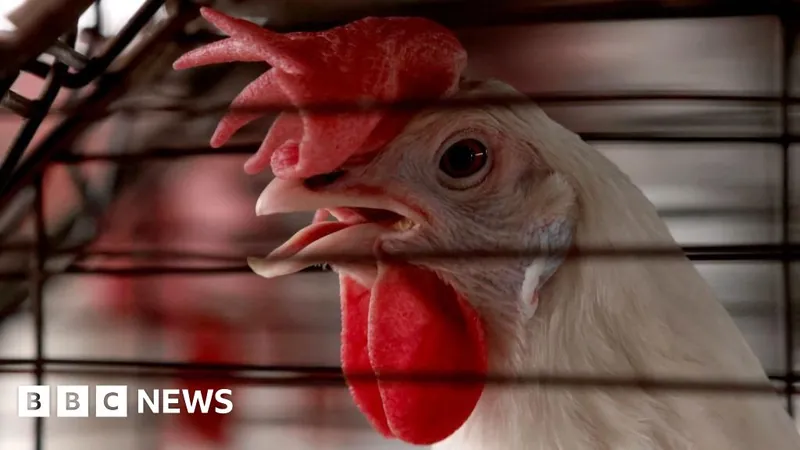
Alarming Bird Flu Cases Surge: Missouri Healthcare Workers Fall Ill After Contact with Infected Patient!
2024-09-28
Alarming Bird Flu Cases Surge
In a startling turn of events, four healthcare workers in Missouri are now reporting mild respiratory symptoms after direct exposure to a patient confirmed to have bird flu. This brings the total number of symptomatic healthcare personnel to six, igniting concerns about possible human-to-human transmission of the virus, which typically affects birds but has previously been rare in humans.
Patient Recovery and Health Official Concerns
The patient, who notably had no known contact with infected animals, has since recovered. However, this unprecedented case raises significant alarm among health officials and the community. While the Centers for Disease Control and Prevention (CDC) confirmed that only one of the exposed workers was tested—yielding negative results—questions remain about the implications of the virus spreading beyond animals.
Testing and Symptoms Among Healthcare Workers
The worker who underwent testing had high-risk contact with the patient and subsequently exhibited mild symptoms. In contrast, the other four healthcare staff who experienced symptoms—including three with low-risk exposure—were not tested at the time, as the CDC indicated the PCR test would have been unreliable given the timeline of their symptom onset.
Household Member Shows Symptoms
Adding to the worry, a household member of the infected patient has also shown symptoms but has not been tested. Fortunately, all symptomatic individuals, including the household contact, have provided blood samples for antibody assessments, although the results of those tests are yet to be disclosed.
National Context and Public Health Scrutiny
This troubling situation comes amid a backdrop of 14 human cases of bird flu reported across the nation this year, with the majority involving farm workers linked to outbreaks in poultry or dairy settings. Missouri’s case is particularly scrutinized, given it is the only known instance with no identifiable animal exposure. Experts like Michael Osterholm, director of the University of Minnesota's Center for Infectious Disease Research and Policy, have called into question the state’s response time in tracking other potential infections stemming from the initial case. 'Public health credibility is really on the line here,' Osterholm warned.
 Brasil (PT)
Brasil (PT)
 Canada (EN)
Canada (EN)
 Chile (ES)
Chile (ES)
 España (ES)
España (ES)
 France (FR)
France (FR)
 Hong Kong (EN)
Hong Kong (EN)
 Italia (IT)
Italia (IT)
 日本 (JA)
日本 (JA)
 Magyarország (HU)
Magyarország (HU)
 Norge (NO)
Norge (NO)
 Polska (PL)
Polska (PL)
 Schweiz (DE)
Schweiz (DE)
 Singapore (EN)
Singapore (EN)
 Sverige (SV)
Sverige (SV)
 Suomi (FI)
Suomi (FI)
 Türkiye (TR)
Türkiye (TR)